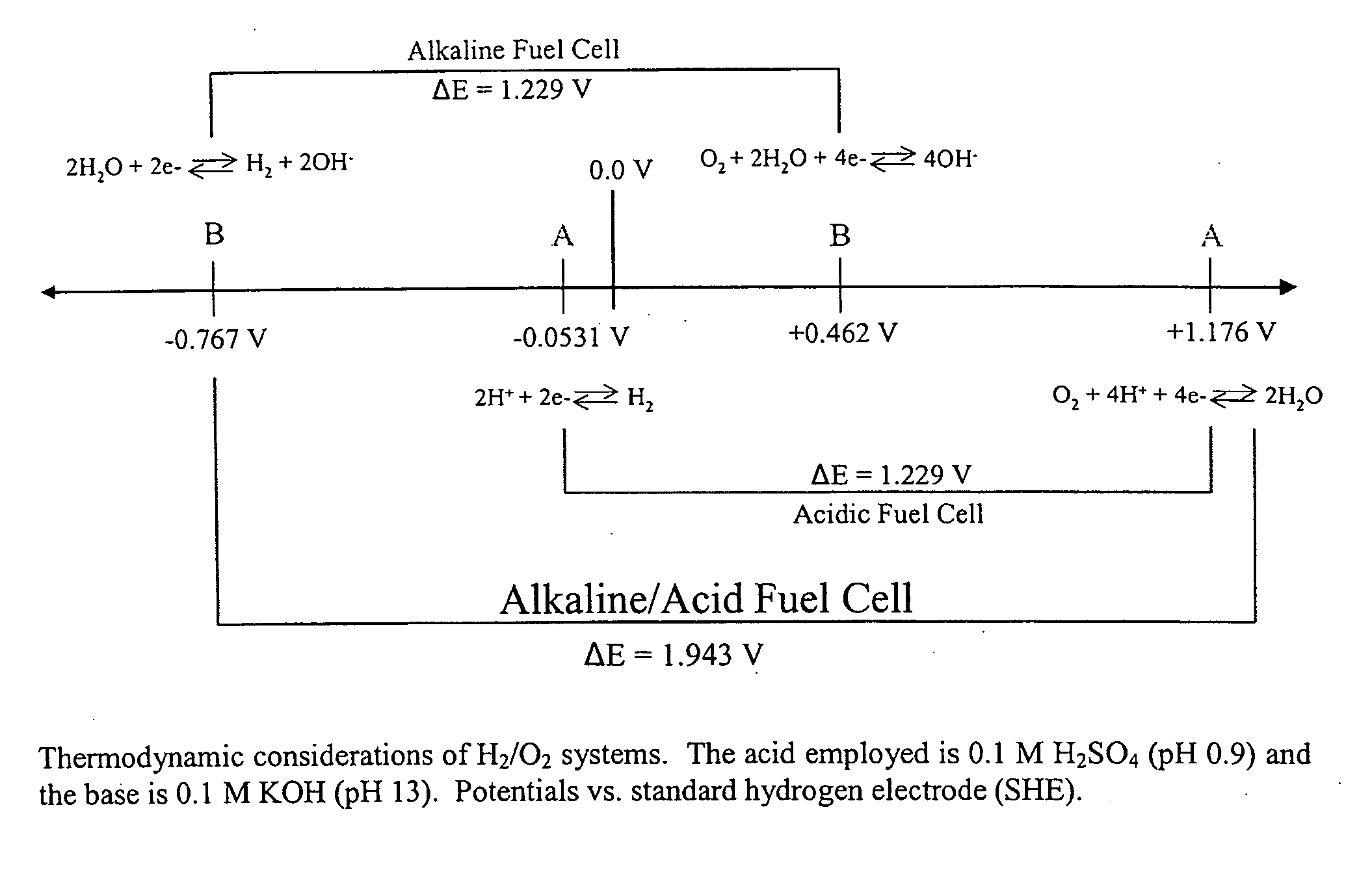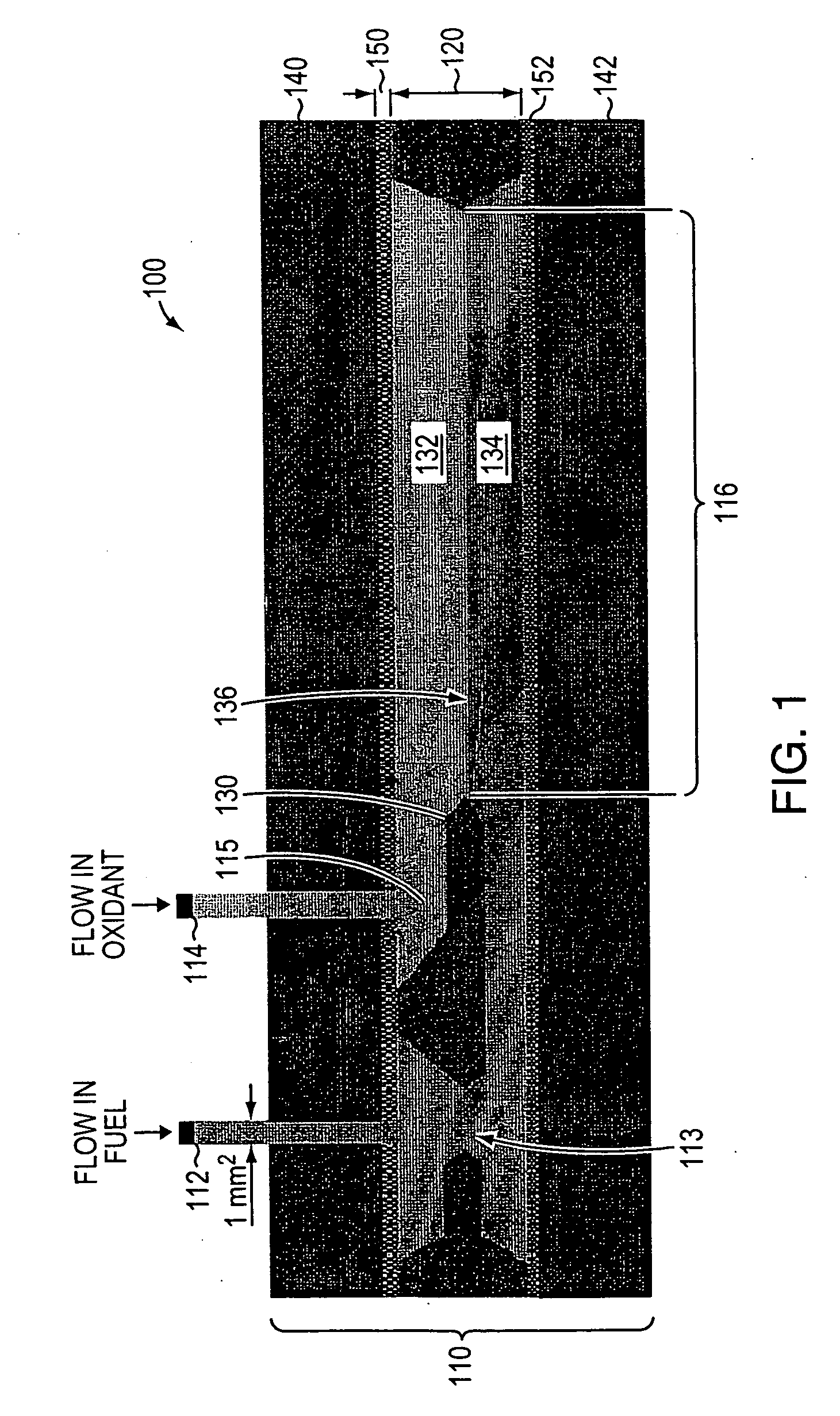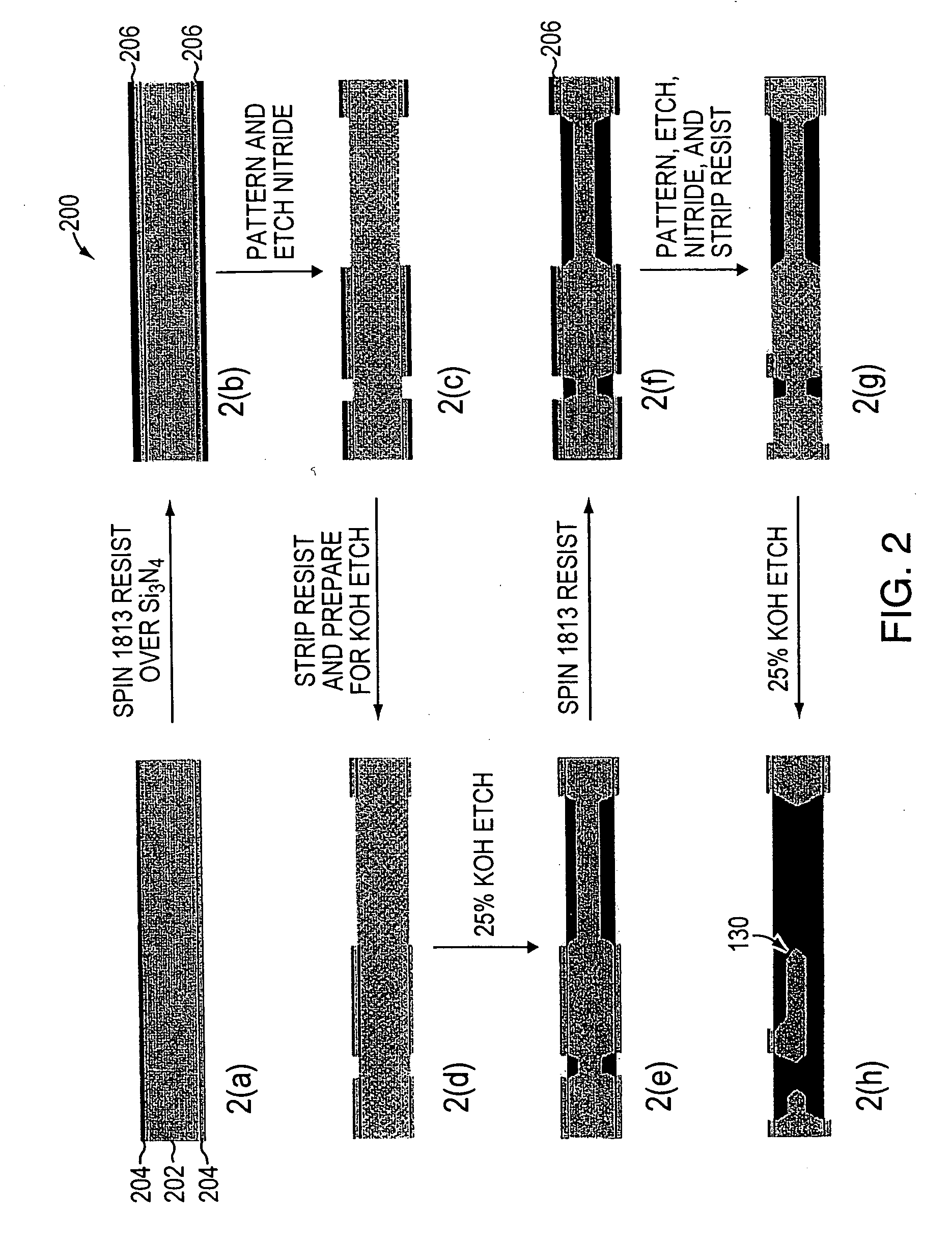Dual electrolyte membraneless microchannel fuel cells
a fuel cell and membraneless technology, applied in the field of microfluidic flow cells, can solve the problems of increasing the complexity of the network structure, increasing the cost, and reducing the thickness, and achieve the effect of high power devices and high power systems
- Summary
- Abstract
- Description
- Claims
- Application Information
AI Technical Summary
Benefits of technology
Problems solved by technology
Method used
Image
Examples
example
[0098] After establishing that the proposed planar design generates laminar flow inside the microchannels, fabricated microchannels and electrodes were integrated into a fuel cell embodiment that illustrates various principles of the invention, including affording deliberate control over system parameters. The silicon microchannels were aligned in a Plexiglas cell with Kapton®-based platinum electrodes placed on the top and bottom of the microchannel, and were clamped together using bolts, as shown in FIGS. 5-6.
[0099]FIG. 6 is a picture that shows an example of a silicon microchannel flow cell configured as a micro-fuel cell 600. In this fuel cell 600, a silicon microchannel 505 is provided. Two input tubes 510, 515 provide fluids that enter the silicon microchannel 505 from the same face, namely the top surface in the embodiment shown in FIG. 6. In the embodiment of FIG. 6, the two input tubes 510, 515 were attached to the flow cell shown with epoxy. However, an...
PUM
| Property | Measurement | Unit |
|---|---|---|
| weight | aaaaa | aaaaa |
| thickness | aaaaa | aaaaa |
| thickness | aaaaa | aaaaa |
Abstract
Description
Claims
Application Information
 Login to View More
Login to View More - R&D
- Intellectual Property
- Life Sciences
- Materials
- Tech Scout
- Unparalleled Data Quality
- Higher Quality Content
- 60% Fewer Hallucinations
Browse by: Latest US Patents, China's latest patents, Technical Efficacy Thesaurus, Application Domain, Technology Topic, Popular Technical Reports.
© 2025 PatSnap. All rights reserved.Legal|Privacy policy|Modern Slavery Act Transparency Statement|Sitemap|About US| Contact US: help@patsnap.com



